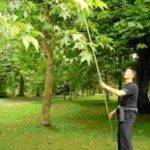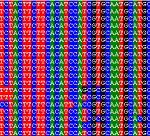Project Background
DNA barcoding is a technique whereby short stretches of DNA are used to determine species identity. It has potential applications in a wide array of disciplines such as ecology, food safety and forensic science. To produce the DNA barcode suitable areas of an organisms DNA need to be selected – namely regions sufficiently stable to allow comparisons but also sufficiently diverse to give meaningful information and enable species differentiation. A number of regions have been suggested for DNA barcoding in plants.
- Collecting samples from the NBG maple lawn.
- DNA sequences from the rbcL region being used as part of a DNA barcode.
Project Aims
This project assessed putative DNA barcode regions for their utility in identifying maples in the living collection at the National Botanic Gardens. The project showed that a two-region DNA barcode (as described by Kress and Erikson 2007 PLoS ONE 2(6): e508) is a useful option for maples. The DNA barcodes were used to correct the identification of one species in the living collection and to confirm the identification of the others. DNA barcoding is particularly useful in aiding cataloguing in cases of specimens that are unknown taxonomically but have an historically important place in the botanic gardens collection.
Project Staff and Partners
This is a collaborative project with UCD School of Biology and Environmental Science. Funding from SFI Ureka program.


